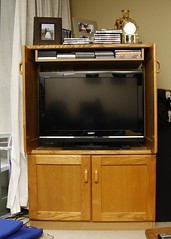I was summoned for jury duty recently, and ended up getting on a trial. The accused was an older man who was answering several charges of indecent assault.
What made this situation somewhat unique is that the crown case was based on little more than the allegations of the complainant (actually this may not be all that unique). The defense lawyer was rather successful in showing the good character of the accused, while discrediting the testimony of the complainant. It would be fair to say there were some significant inconsistencies, and much of the story just didn’t stack up.
In the end I felt that most of the charges the crown laid against him were improbable, which is a long way from guilty beyond all reasonable doubt, and thus I voted firmly for not guilty in the jury room. A couple of the others initially voted not sure for some of the charges, but none of their arguments proved the charges beyond reasonable doubt, so they were happy voting not guilty in the end.
One jury member however voted guilty, and would not be swayed. He saw it in black & white – i.e. you either believe the testimony of the complainant or the accused. Having heard all the evidence last week (only the closing addresses were made today) he decided over the weekend that he believed the story, and that would be his position.
The problem with his position, was that he himself admitted there was doubt (which seemed reasonable to the rest of us), and that he couldn’t be sure. How then can you find the accused guilty? He obviously held firm beliefs, but I think those beliefs did not allow him to be impartial, and that he was acting contrary to the law. In fact he appeared to have issues with the judicial process and the whole concept of reasonable doubt.
In the end, what should have been a 1 hour deliberation turned into 4, which is the minimum amount of time required before a majority verdict can be considered. It is frustrating when you have a jury member that can not be swayed be rational argument (to say the least), and really it should have been unanimous as he clearly had reasonable doubt! He certainly could not make a good argument himself, and in the very least he should have been able to say what aspect of the crown’s case convinced him.
So it would be an understatement for me to say that I am grateful for the recent law change that allows majority verdicts. It still requires a majority of 11 to 1, but it mitigates situations like ours where one juror stubbornly refuses to listen to reason.
If you ever get summoned for jury duty I recommend doing it if you haven’t before (apparently the response rate is something like 1 in 10). I was probably quite lucky with my trial in that the charges, while serious, were not of the kind that makes you reel in horror, and the complainant did not appear to be traumatised much at all (if I had to listen to days of disgusting evidence about someone that was clearly guilty this would be a very different blog post). This case will certainly stick in my mind for a long time, but I’m comfortable we made the right decision.




